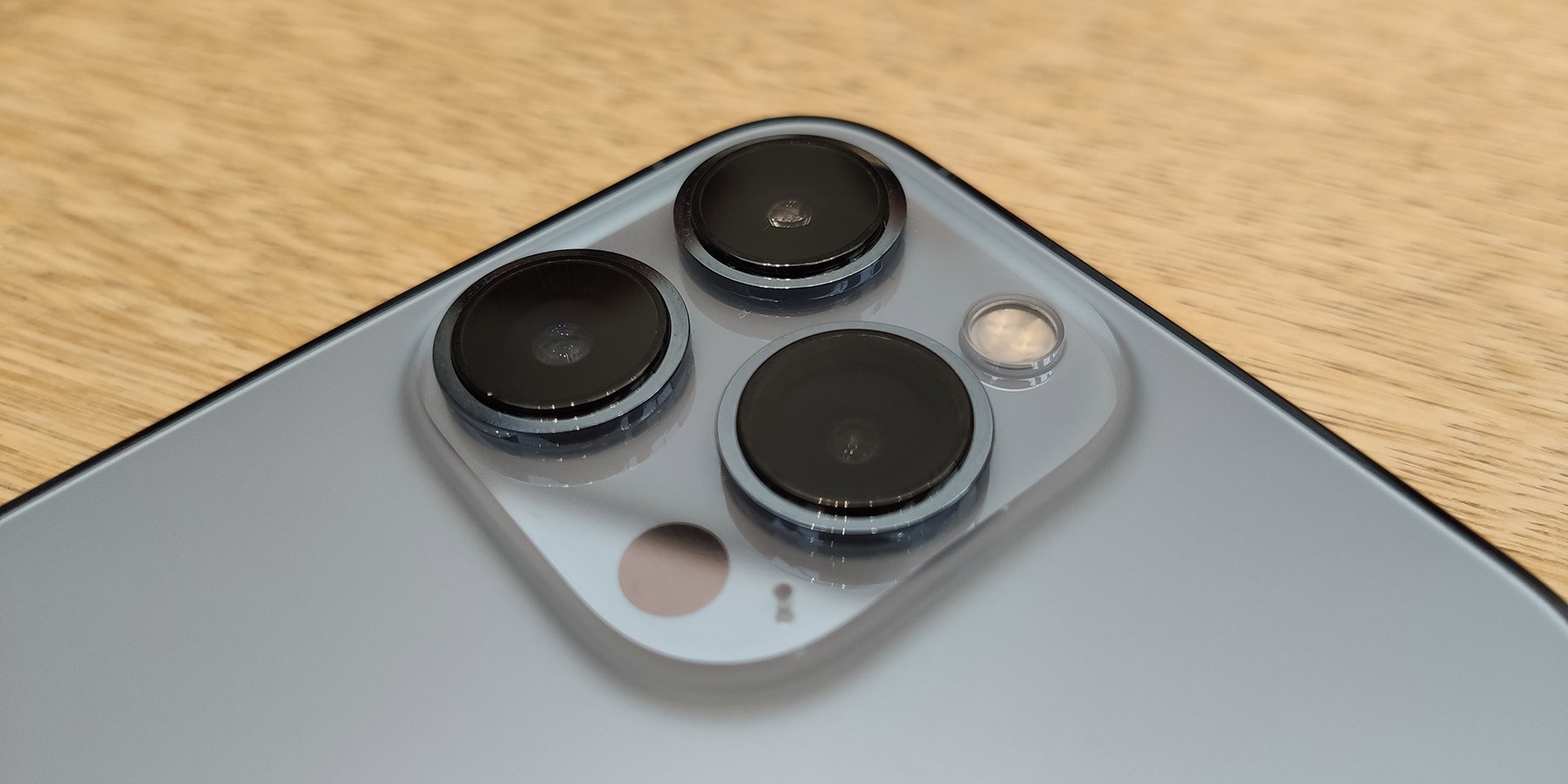Abstract
Do you ever use the manual camera settings when taking pictures with your phone? Does your phone have more than one camera lens? This project is a great way to learn more about your phone's camera(s) and how to take better pictures. You can also do this project with a traditional point-and-shoot camera or another camera like a DSLR.Summary

Objective
The objective of this project is to measure the quality of a photographic lens.Introduction
Lens testing can be as simple or as complicated as you desire, resulting in science projects that suit the needs of a wide variety of students. It's a fun way to learn more about your camera and learn how to take better pictures.Terms and Concepts
To do an experiment in this area, you should do research that enables you to understand the following terms and concepts:- The parts of a lens (lens elements, diaphragm, lens coating, focusing mechanism)
- Aperture
- Focal length
- f/stop
- Barrel distortion, pincushion distortion
- Chromatic aberration or color fringing
- Coma
- Light falloff, vignetting
- Flare and ghosts
- Sharpness
Advanced students should also study and learn about:
- Field curvature
- Diffraction
- Modulation Transfer Function (MTF)
- Subjective Quality Factor (SQF)
Bibliography
To learn about lenses, basic optics, and photography, try these sources:- Wikipedia. (n.d.). Aperture. Retrieved November 8, 2023.
- Wikipedia. (n.d.). F-number. Retrieved November 8, 2023.
- Wikipedia. (n.d.). Optical coatings. Retrieved November 8, 2023.
- Wikipedia. (n.d.). Lens optics (includes some lens defects). Retrieved November 8, 2023.
- Wikipedia. (n.d.). Photography. Retrieved November 8, 2023.
- Bob Atkins Photography. (n.d.). A Very Basic Guide to Optics in Photography. Retrieved November 8, 2023.
- Astropix. (n.d.). Lenses for Astrophotography. (Camera). Retrieved November 8, 2023.
- McGee, Jim. (n.d.). The Brick Test A Quick and Dirty Test for Wide Angle Lenses. Vivid Light Photography. Retrieved November 8, 2023.
- Astropix. (n.d.). Winter Star Trails. Retrieved November 8, 2023.
- Doty, Jim. (n.d.). Lens Testing with theUSAF 1951 Chart. Retrieved November 8, 2023.
- Koren, Norman. (n.d.). Why test your lens?. Retrieved November 8, 2023.
- A good, basic description of the gold standard for measuring sharpness, the modulation transfer function or MTF:
Bob Atkins Photography. (n.d.). Modulation Transfer Function (MTF) and Subjective Quality Factor (SQF). Retrieved November 8, 2023. - How to actually measure MTF for a lens:
Koren, Norman. (n.d.). Understanding image sharpness part 5: Lens testing. Retrieved November 8, 2023.
Materials and Equipment
- A smartphone or camera
- A tripod is highly desirable for this project, but you can also place your camera on almost any steady object.
- Some of the advanced tests require a test target. In many cases you can download these targets and print them out. And, if you use a film camera with a target, you'll need a magnifier or a low-power microscope.
Experimental Procedure
Some lens tests are amazingly simple, yet give a good indication of lens quality. Others are very mathematical and more precise. The table below is a brief summary of the tests you might perform. Use your background research to learn about each one, then choose the test that's appropriate for your phone/camera and your science background. If you are used to using the automatic settings on your phone, you will need to explore the "manual" or "pro" camera settings and see what options are available for you to change. Many modern smartphones also have multiple lenses for various levels of wide and zoom viewing. The sources listed above are a good place to start, and they will give you detailed instructions about how to perform the tests.
| Type of Test | Level of Difficulty | Type of Camera | What You Can Observe |
| Brick Wall Test | Easy | Any |
- Barrel & pincushion distortion - Light falloff - Sharpness |
| Star Test | Medium | Must have the ability to take "timed" exposures of many seconds duration. Note that the image sensor in some digital cameras has poor image quality for long exposures, even if the lens itself is good. |
- Coma (star trails become fat in the corners even for dim stars) - Color fringing (bright stars are not a uniform color) |
| USAF Test | Medium | Any | - Resolution - Sharpness |
| MTF Calculation | Difficult This procedure is for a student who is very comfortable with mathematical equations and complicated graphs. |
Any | - Resolution - Sharpness |
Lens quality varies with the aperture, and for zoom lenses it also varies with the focal length. So, for different trials in your experiment you will want to change these settings. See the table below.
| Type of Camera or Lens | What to Test in Each Trial of Your Experiment | Your Hypothesis |
| Automatic Exposure Control Only, No Zoom Lens | With a basic camera like this you're only doing a single test and you don't really have anything to compare it to. (That's bad for a science project!) So, try comparing two or more different cameras to each other. Some automatic cameras have an "exposure compensation function". This might allow you to test the lens at up to two f-stops higher or lower than normal. Unfortunately, the photo will also be over or under-exposed, perhaps making your test difficult to interpret. |
After finding more than one camera to test, your hypothesis could be about which camera you think will be best. |
| Automatic Exposure Control Only and Zoom Lens | For a camera like this you may only be able to test one aperture, but you can compare results at different amounts of zoom. If the lens does not read out its focal length, do your tests at the narrowest zoom and the widest zoom, then the focal lengths should be fairly close to the "spec" on the lens. For example, if the lens is marked 24-75mm, then the focal length is 24 mm at the widest view and 75 mm at the narrowest view. |
After doing your background research, you should be able to make a hypothesis about which focal length will be best. |
| Camera with Manual Exposure Control | Test your lens at every f-stop. You can maintain the proper exposure by adjusting the shutter speed. If you have a zoom lens, test every f-stop at each focal length marked clearly on the lens. If there are no focal length markings, do your tests at the narrowest zoom and the widest zoom, then the focal lengths should be fairly close to the "spec" on the lens. For example, if the lens is marked 24-75mm, then the focal length is 24 mm at the widest view and 75 mm at the narrowest view. |
After doing your background research, you should be able to make a hypothesis about which aperture will be best. |
- One of the most important things when doing a lens test is to make sure that your camera is absolutely steady during the exposure. Use a tripod or rest the camera on a steady object.
- If your camera has the capability, use a cable release or the self-timer to trigger the shutter. Like a tripod, this will help to keep the camera steady.
- If the test you choose uses test targets, or if you do the brick wall test, make sure that the entire area in the picture has uniform lighting. You don't want part of the scene to be in the shade and part in the sun.
- Lens quality tends to be higher in the center of the image than at the corners, so be sure to examine both.
- Make sure that you carefully focus your lens if you have a manual focus camera.
Ask an Expert
Variations
- Vibration or camera movement while the shutter is open is one of the biggest causes of poor photos. Compare the quality of photographs from a lens test on a tripod versus a lens test when you hold the camera by hand. You'll want to take a number of photos by hand for each test. How much difference is there between handheld photos and tripod photos? How much difference is there among the handheld photos—are some better than others? You could also compare the ability of different people to take "steady" photos, or compare different techniques of holding the camera. Shutter speed will be an important variable when testing handheld photos. Can you measure the impact of shutter speed on photo quality?
- If you have a camera that uses interchangeable lenses, test a variety of different lens to compare their performance.
- You can compare the results from different types of lens test. For example, how does MTF compare to a simpler test such as a star test. To do this experiment properly, you should compare the different lens tests for several lens or cameras.
Careers
If you like this project, you might enjoy exploring these related careers:
Related Links
- Science Fair Project Guide
- Other Ideas Like This
- Photography, Digital Photography & Video Project Ideas
- My Favorites










